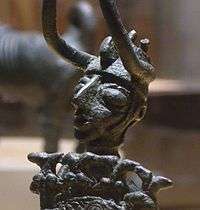Nuragic bronze statuettes

The nuragic bronze statuettes (bronzetti in Italian, brunzittos or brunzittus in Sardinian) are typical Sardinian bronze sculptures of the final phase of the Bronze Age and the early Iron Age.
During the archaeological excavations in Sardinia have been discovered more than 500 of these bronzes, mainly in places of worship such as holy wells and the so-called megara temples but also in the villages and in the nuraghi. Several statues were also found in excavations carried out in central Italy and precisely in Etruscan tombs of the IX-VIII century BC.
Probably obtained with the lost wax technique, they can measure up to 39 cm. They represent scenes of everyday life of the nuragic people, depicting characters from various social classes, animal figures, warriors, chiefs, divinities, everyday objects and ships.
Archaeologists have not been able yet to date the figures accurately: they were allegedly made between the ninth century BC and the sixth century BC, however, the recent discoveries at Orroli of fragments of bronze statues dating from the thirteenth century BC have called into question their effective date.
| Wikimedia Commons has media related to Nuragic bronze statuettes in Sardinia. |
Bibliography
- AA.VV., La civiltà in Sardegna nei secoli, Torino, Edizioni ERI.
- Casula F.C., La storia di Sardegna, Sassari, 1994.
- Foddai L., Sculture zoomorfe. Studi sulla bronzistica figurata nuragica, Cargeghe, 2008.
- Lilliu, G. La civiltà dei Sardi dal neolitico all'età dei nuraghi, Torino, Edizioni ERI, 1967.
- Lilliu G. Sculture della Sardegna nuragica, Verona, 1962.